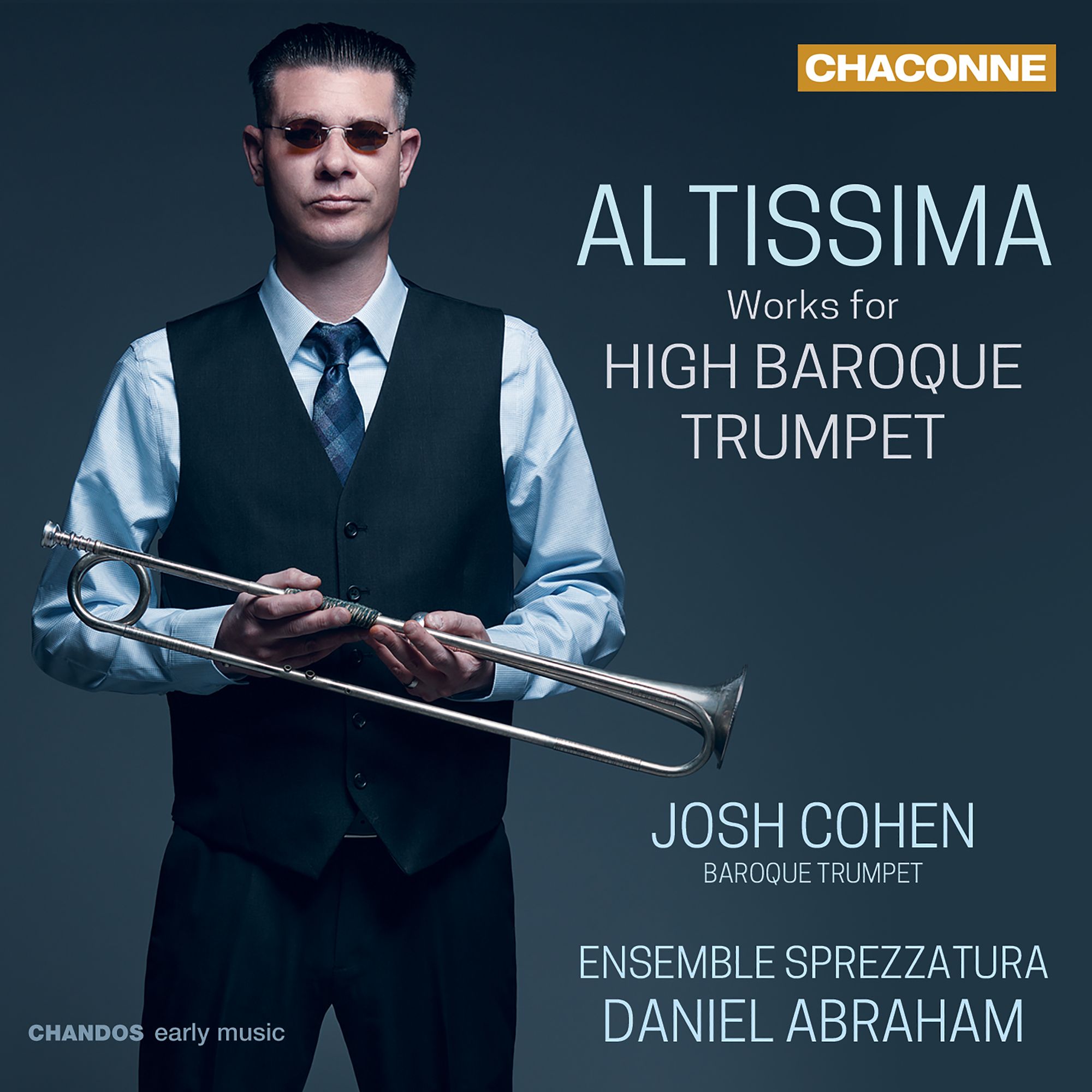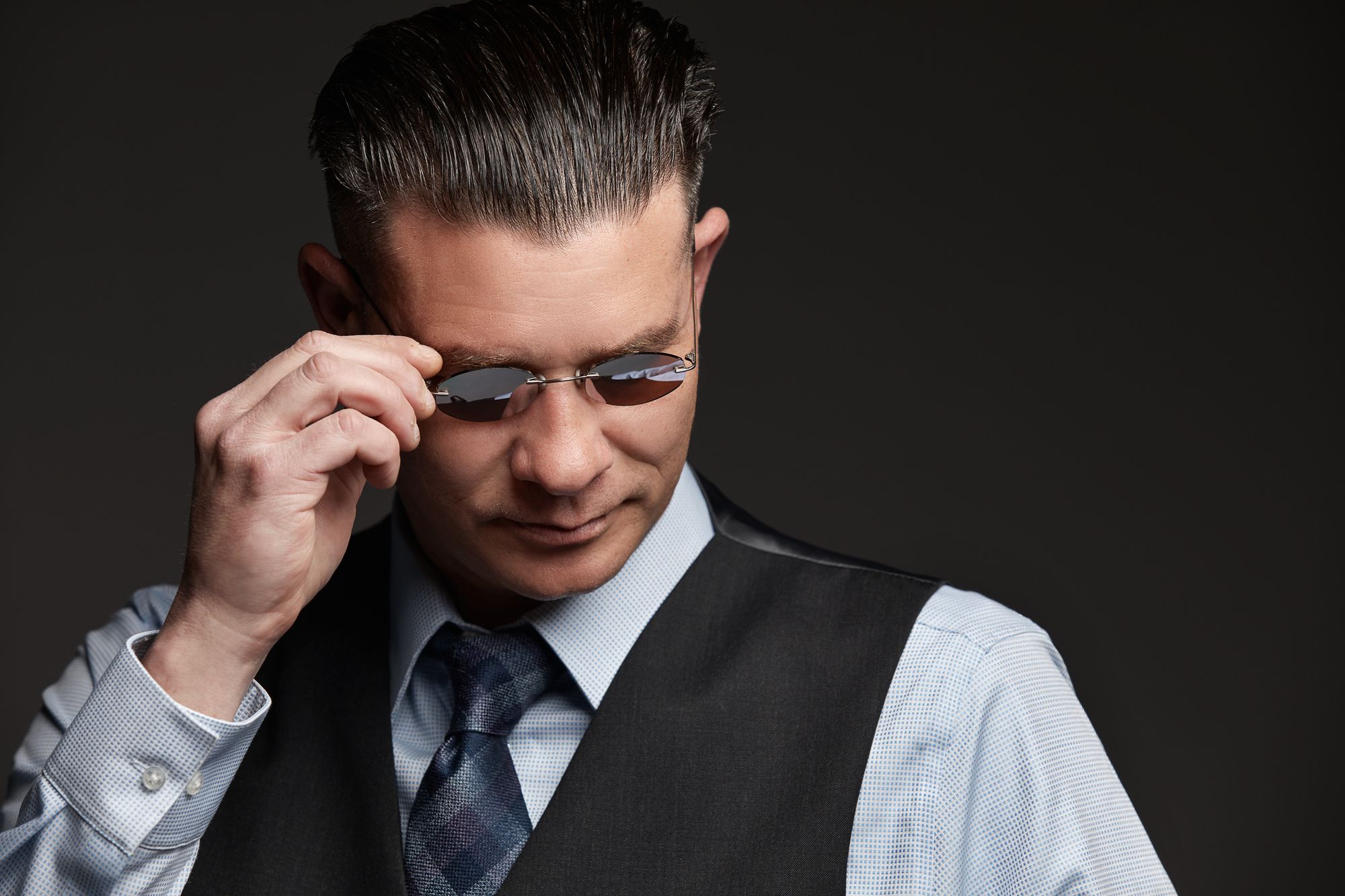Altissima: Works for High Baroque Trumpet
One of the best trumpet records of recent decades, I would suggest. Don’t miss it!

The Baroque trumpeter and clarino specialist Josh Cohen is in high demand in North America. He is a native of the Washington, DC area, and performs regularly with most of the leading early music ensembles in North America, and has appeared as principal or solo baroque trumpet with ensembles such as Tafelmusik (Toronto), Washington Bach Consort, Studio de musique ancienne de Montréal, Arion Orchestre Baroque (Montreal), The Bach Sinfonia (Washington, DC), Seraphic Fire (Miami), Apollo’s Fire (Cleveland), and the Sebastians (New York).
The Chandos material for this release is useful in tracing the modern history of teh sounds we hear here: “The development of historically informed trumpet playing has come a long way since the very early days of the movement, from coiled trumpets – first produced by Steinkopf-Finke, and played by Walter Holy in a 1962 recording of the Second Brandenburg Concerto under Harnoncourt – to the first modern baroque trumpets of Meinl & Lauber.”

Devoted to a broad cross-section of trumpet repertoire from the late seventeenth century through the mid-eighteenth, this recording shows how far the art of playing the baroque trumpet has advanced.
Josh Cohen's opening flourish tells up pretty much all we need to know about his playing: it's perfect. Attributed to Gottfried Reiche, this is 32 seconds that will warm any brass player’s heart. All we know is that it was written before 1727 and is attributed to Gottfried Reiche (1667-1724).
How wonderful we have a piece by Christophhe Graupner (1683-1760). I have to say, that in all teh time I’ve been writing Classical Explorer, it is the music of Graupner that was my discover. from Bassoon Cantatas on cpo to another set of cantatas (on Capriccio this time) and the opera Antiochus and Stratonica (back on cpo).
Here we have the Trumpet Concerto, GWV308 of 1744. Listen to the freshness of the second movement, and how clarion clear Cohen is (especially in his interchanges/imitations with the strings):
This is as expertly crafted as we might expect from Graupner, full of invention.
Rather more richly scored is the Sonata à 8 by Romanus Erichlein (1652-1708) for two trumpets (Joelle Munroe the second here), strings and basso continuo. The piece is from Encenia musices, published in 1695:
There is a sense of inevitable unfolding about thsi piece (throughout) that really appeals. The performace is impeccable; and note how Cohen and the Ensemble Sprezzatura under Daniel Abraham differentiate so well between the sound worlds of Graupner and Weichlein. Interesting how the slow movement is marked “Con discretione”; beautiful how the strings oteh Ensemble Sprezzatura revel in Weichlein’s lines:
The music here isn’t all drenched in the sound ofthe trumpet. It is the woodwind - and the obow in particular - that shines in the Sonata in C-Major by Gottfried Finger (c. 1660-1730). Here’s the second movement of this four-movement piece:
Little though could prepare the listener for the absolute screamer of a trumpet note that opens the Sinfona à 7 for trumpet, two horns, violin, oboe, bassoon, timpani, strings and basso continuo by Johann Samuel Endler (1694-1762), a name new to me, I have to confess:
But there is a gentilité to Endler’s music, too, as this positvely grazioso second movement (an Andante for the strings and woodwind) attests:
.. which itself sits in high cotrast to the almost Bachian majesty of the ensuing Menuet I - Cohen’s silvery trumppet garlands the dance perfectly (his tuning is perfect everywhere, but for some reason I particularly noticed it here):
There are some right screamers in the Vivace - and, gesturally, Cohen has it right to just go for it! (a special word here for Ensemble Sprezzatura’s bassoonist, Stephanie Corwin, so deliciously nimble hre):
I've probably mentioned before on Classical Explorer my love for the music of Telemann - above that of Bach, even (heresy, I know!). Here we have the Concerto TWV 43: D7 (so the 'D7' means this is the seventh concerto in the 43rd volume of Telemann's works, the Telemann-Werke-Verzeichnis - “TWV 43” - to be in D-Major!). This is 14 minutes of sheer perfection, from both composer and performers. There s a sense of French gallanterie about thsi piece: listen to the stately opening movement, a Largo, and the simply glorious interactions between Cohen, two oboes (Margaret Owens nd Geoffrey Brugess) and bassoon (Corwin again):
That movement ends with a perfectly delivered octave; the Vivace that follows if flowing yet surprisingly calm. Part of the delight here surely lies in the pair of oboes working togetehr in parallel intervals. Is there no end to Telemann’ws invention? It would appear not:
The Siciliano is really special. No trumpet here, but pastoral woodwinds musing in a gently wafting 6/8:
The finale dances beautifully. The trumpet and oboes are used as three equal voices here:
I have quoted all four movements of the Telemann because it is simply such an amazing piece, perfectly proportioned, full of imagination.
After the white brightness of the Telemann finale, slightly darker hues for the Ciaccona (Chaconne) à 7 of 1678 by Philipp Jakob Rittler (c. 1637-1699). Only 74 of Rittler’s works survive - thank goodness this one does!. The dialogue between instruments (including two trumpets, with Joelle Monrow again on second) and the other players (violin, three violas, cello, baroque guitar, harpsichord and percussion) is sheer joy, while the ongoing repetitions spawn ever-more complex decorations and variation. The reassuring omnipresence of the bass ostinato, though, grounds the work (pardon the pun) perfectly. What a piece!:
How to end? A piece by Capel Bond (1730-1799) might not seem the most obvious choice, but this is a revelation. Bond was an Englishman, son of a bookseller who was organist at Coventry churches. Only two sets of pieces survive: Six Anthems (published 1769) and Six Concertos in Seven Parts (published 1766) of which this, in D-Major, is the first. The first movement finds Cohen is blazing form (the main body is marked "Con spirito"):
Do listen to the finale, a Larghetto (!) and see if you agree that there is something of Bach’s “Air on a G-String” about this:
The recording is fabulous: it was made in Spencerville Adventist Church, Maryland, USA in January 2020. How wonderful that Cohen et al opt to end with a movement of such beauty as opposed to some virtuoso final flourish - it acts as a reminder of the depth available on this disc in addition to the high-flying antics. Performances are faultless: Cohen is a true master of his instrument, the Ensemble Strzzatura a supremely sensitive yet virtuoso group, expertly led by David Anraham.
One of the best trumpet records of recent decades, I would suggest. Don’t miss it!
